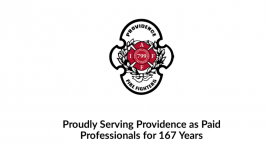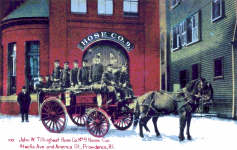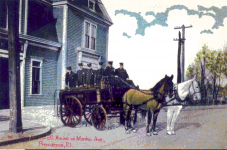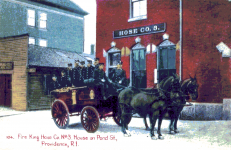You are using an out of date browser. It may not display this or other websites correctly.
You should upgrade or use an alternative browser.
You should upgrade or use an alternative browser.
Providence Fire Department - 157 Years Old
- Thread starter mack
- Start date

Photos: Historic The Providence Fire Department
The Providence Fire Department is one of the oldest in the United States. Here are some historic pictures of firefighters and their equipment (and some horses) over the years.
Central Fire Stations, Providence
The story of two central fire stations located on the perimeter of Exchange Place, now Kennedy Plaza.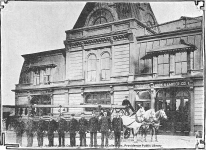
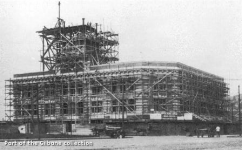
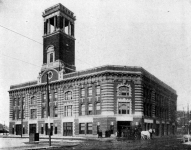
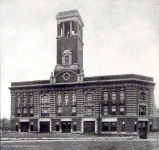
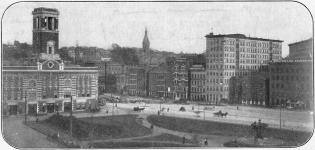
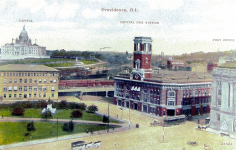
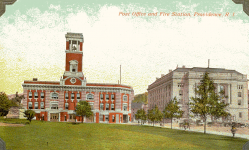

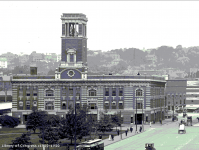

Central Fire Stations, Providence | ArtInRuins
The story of two central fire stations located on the perimeter of Exchange Place, now Kennedy Plaza.

PFD - 1997 3 Alarm Factory Fire
On The Job - Rhode Island
Paul A. Wentworth and Rob Palmer report on a fire that gutted a five-story factory in Providence.Paul A. Wentworth and Rob Palmer
Jul 1st, 1997
Providence Fire Department
Chief James F. Rattigan
Personnel: 539 career firefighters
Apparatus: 14 engines, eight ladders, one special hazmat heavy rescue, five EMS rescues
Population: 160,000
Area: 18 square miles
An intense and rapidly moving fire destroyed a five-story factory in a residential neighborhood of Providence, RI, on Oct. 22, 1996. Two three-story homes across the street from the vacant building were also destroyed and a third home was heavily damaged. Six alarms transmitted within the first 26 minutes of the incident were required to contain the fire spread.
Two 14-year old boys were charged with setting the fire three days after the incident.
Like many Northeast cities, the relocation of industry to outlying towns has left Providence with vacant industrial complexes and abandoned houses. The Gordon Complex, site of the former American Tubing and Webbing Co., was built in the South Providence section of the city in 1898 of typical mill-type brick and heavy timber construction. It measured 75 by 300 feet. A one-story boiler room and storage area ran nearly the full length of the west side. The complex had been vacant since 1994 and had fallen into disrepair. The building's sprinkler system was out of service due to a lack of maintenance.
At 5:42 P.M. on Oct. 22, Providence Fire Alarm received a call reporting smoke coming from the factory, located at 65-109 Gordon Ave. A still box was transmitted for a full first-alarm assignment consisting of Engines 10, 13 and 11, Special Hazards, Ladders 5 and 1, Rescue 1 and Deputy Assistant Chief Paul Wentworth. Engine 10's station was only two blocks from the complex, and as Lieutenant George Barkan and his crew of three firefighters drove up Gordon Avenue from the south at 5:44, he reported a heavy smoke condition and fire showing in the interior of the first floor, possibly extending to the second. He immediately called for a second alarm.
Members of Engine 10 stretched a 2 1/2-inch handline through a door on the northwest side, or Side 1, and used tank water in an effort to knock down the fire. With help from Engine 11's crew, Engine 10's feeders were tied to a hydrant across the street from the center of the building. Other arriving engines were instructed to find their own hydrants and set up master streams.
Wentworth, clearing another call in the vicinity, arrived soon after the first-alarm companies. Beginning his size-up, he noticed fire pushing heavily from five windows on the first floor in the area of Engine 10's attack, and dark smoke swirling out of many others. Engine 10's line was having no effect, and the firefighters withdrew from the building.
Anticipating rapid intensification of the fire, Wentworth ordered Engine 10 to disconnect from the hydrant and Ladder 1, which had just set its jacks, to move. The latter, a 95-foot tower, relocated to a vacant lot at the corner of Potters and Gordon avenues, across the street from the fire building. Here, it was in excellent position to sweep its master stream in a 180-degree arc. But, due to the extreme heat, it was forced to move several more times during the night.
Wentworth then checked conditions on Side 3, which faced the backs of 1 1/2-story houses on Baxter Street. He watched as the fire raced from floor to floor and southward the full length of the building at incredible speed, an event he had not witnessed in 30 years of firefighting. "The rapidity of the fire spread was awesome," said Wentworth. Within 13 minutes of the first telephone call to Fire Alarm, the entire building was consumed by fire.
Returning to the Gordon Avenue side, Wentworth located his command post at the corner of Sides 1 and 2 where his exposure problem was the most critical. Light winds from the southwest did little to affect fire spread in the building but the air currents were pushing the raging fire from the upper floors across Gordon Avenue. Three three-story homes located just 50 feet across the street from the fire building were already smoking and flying brands carried skyward by thermal currents were pushing off to the east toward more homes on Croyland Road, a block east of the fire. In addition, high-tension power lines and transformers within feet of the building were sizzling and arcing, and several brilliant blue explosions created a spectacular scene.
Engine 11 deployed its deck gun to the wooden houses, and was soon joined by several 2 1/2-inch handlines. But the buildings were too far up the street from the less exposed positions occupied by the firefighters, and the water had little cooling effect. All of this was happening so quickly that firefighters from Special Hazards had to pound on back doors of these homes to evacuate tenants who were unaware of the conditions.
Reacting to the rapidly deteriorating situation and the ignition of the first exposure, 88-90 Gordon Ave., Wentworth requested the third alarm at 5:49, the fourth alarm at 5:51 and the fifth alarm only two minutes later.
The third and fifth alarms, as well as two additional engines that were requested in the next 15 minutes, were assigned to fight the growing threat on the east and south sides of the fire. Their arrival was delayed as rush-hour traffic and a crush of would-be onlookers combined to clog the narrow streets in the neighborhood. Engine 7 and Tower Ladder 2 arrived and set up on Side 2 in a parking lot between the fire building and a school. By 6:06, Tower Ladder 2 was adding its master stream to the protection of the exposures. Despite this effort, two houses eventually burned nearly to the ground.
Battalion 2 Chief Michael Dillon, arriving with the second-alarm companies, was assigned to Side 3 on Baxter Street. He quickly recognized the likelihood of wall collapse and ordered the evacuation of all houses abutting the factory property. As this was being accomplished, Engine 3 and Engine 8 worked together to feed Ladder 8's pipe, while Engine 9 supplied Ladder 5. When the fourth alarm companies came on scene at 5:59, Engine 2 supplied Ladder 4's ladderpipe and a 2 1/2-inch handline to cover the exposures. At 6:07, Dillon reported to Command that his companies would hold their positions. With the exception of several houses that suffered melted siding, their efforts were a success.
Battalion 3 Chief Joseph Scolardi battled his way through the gridlock in the streets from the north end of the city and was assigned to protect the numerous exposures on Side 1 at 5:58. As units arrived, he ordered firefighters of Engines 4, 6, 10, 12, 14 and 15 and Ladders 3, 4 and 6 to stretch handlines through the shower of embers from engines on Croyland Road toward the burning exposure buildings.
At 6:20, the roof and loft of the third three-decker, 100-102 Gordon Ave., were burning. However, Scolardi's firefighters were able to enter this structure, mount an aggressive interior attack, and limit fire damage to the front part of the roof and loft area. These handlines, and supply lines for several portable monitors, were stretched between houses and over chainlink fences from Croyland Road and Sayles Street. Firefighters were at a premium in the early stages of the effort, and commanders of other sectors were asked to provide any spare members.
Flying brands were responsible for two mishaps. The first involved the house at 14-16 Croyland Road. Roofing material caught fire but was promptly doused by crews from Engine 14 and Ladder 6. This happened moments after Ladder 6, sitting squarely in the path of the flying brands, sucked in an ember that ignited the air filter and stalled the truck. The smoky fire was quickly extinguished by the on-duty mechanic but the truck was out of service until the filter could be replaced.
Brand patrols were conducted by officials from Fire Prevention and the Fire Marshal's office. In addition, Engine 15, relay pumping a hydrant two blocks east of the fire, used its deck gun to wet exposures in the area.
Less than 30 minutes into the incident, 130 firefighters, including off-duty personnel recalled from another platoon, were battling the blaze. The city's front-line engines were on the scene, and all but one was flowing water to seven ladderpipes, four deck guns and 12 handlines. Their efforts were augmented by an engine from East Providence and a pumper from Smithfield, which brought five-inch hose to supply its 55-foot Squrt. Only one Providence ladder was not dispatched but it led a task force that responded to other calls in the city during the incident. Fire Alarm filled empty stations with eight engines and five ladders from neighboring North Providence, Pawtucket, Cranston, Warwick, Warren, Johnston, Smithfield and Bristol.
Aware of the imminent collapse of exterior walls, all units placed themselves at corner positions or well away from danger. Wentworth reported a major wall collapse at 6:15. Much of the collapse was curtain-type or inward as the floors gave way, and no injuries were incurred.
Following the collapse of the roof and much of the center of the factory building, radiant heat diminished significantly and this allowed firefighters to move master streams closer for better penetration. Wentworth declared the fire contained at 7:17 P.M. and under control an hour later.
Besides the three houses on Gordon Avenue that were either destroyed or sustained serious damage, two suffered only heat damage to their roofs. Three houses on Baxter Street escaped with heat damage to vinyl siding. And farther away, on Croyland Road, another five homes incurred light damage. Seven automobiles were destroyed. A total of 102 residents were evacuated and provided with temporary shelter, and 36 of those were left homeless.
Scene Management
Several factors led to successful control of the fire. The incident command system used by the Providence Fire Department efficiently managed the scene. When Chief of Department James F. Rattigan assumed overall command of the incident at 6:10 P.M., Wentworth's command of the fire suppression operations continued uninterrupted. The latter's four sector commanders Dillon, Scolardi, and Captains John Thomas and Paul Thomas carried out his directives effectively. But, most importantly, it was Wentworth's strategy to immediately apply all of his experienced and aggressive resources to exposure protection that prevented greater loss of neighborhood residences.
Three days later, police charged two 14-year-old boys with setting the fire, citing physical and circumstantial evidence which corroborated their involvement.
Providence Fire Department
Tuesday, Oct. 22, 1996:
65-109 Gordon Ave.
1743 hours Still box 1454 opposite 84 Gordon Ave., smoke from building: Engines 10, 13, 11, Special Hazards, Ladder 5, Tower Ladder 1, Rescue 1, Division 1.
1747 Second alarm: Engines 3, 8, 9, 5 with Air Supply; Ladder 8; Battalion 2.
1750 Third alarm: Engines 7, 14; Tower Ladder 2; Rescue 2; Battalion 3.
1753 Fourth alarm: Engines 2, 12; Ladder 4.
1754 Fifth alarm: Engines 6, 15; Ladder 6.
1809 Sixth alarm: Engine 4; East Providence Engine 1; East Providence Ladder 3.
1832 Special signal: Ladder 3.
1848 Special signal: Smithfield Engine 1; Smithfield Squrt 2.
Paul A. Wentworth is a 30-year veteran and deputy assistant chief of the Providence, RI, Fire Department. He was the first incident commander at this fire. Rob Palmer is an assistant chief and training coordinator in the Pawcatuck, CT, Fire Department.
Mayday
A catastrophic collapse traps a Providence firefighter on the second floor of a burning home. Weeks later, the crew from Providence Fire Department Special Hazards shares how training and instinct led them to survival. Reporter: Caroline Goggin Photojournalist: Corey Welch Produced: January 2018 (C) WPRI-TV
A catastrophic collapse traps a Providence firefighter on the second floor of a burning home. Weeks later, the crew from Providence Fire Department Special Hazards shares how training and instinct led them to survival. Reporter: Caroline Goggin Photojournalist: Corey Welch Produced: January 2018 (C) WPRI-TV
Very cool info. Never knew that bout PFD.
Photos: Historic The Providence Fire Department
The Providence Fire Department is one of the oldest in the United States. Here are some historic pictures of firefighters and their equipment (and some horses) over the years.www.providencejournal.com
- Joined
- Nov 2, 2020
- Messages
- 1,007
Terrific photos! Thank you.



